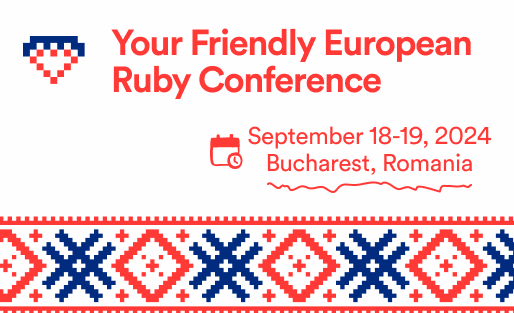Multilingual content
This is not an official feature yet, but until we add it with all the bells and whistles, you can use this guide to monkey-patch it into your app.
We pushed some code to take in the set_locale param and set the I18n.locale and I18n.default_locale so all subsequent requests will use that locale. That will change the locale for your whole app. Even to the front office.
If you don't want to change the locale for the whole app, you can use force_locale, which will change the locale for that request only. It will also append force_locale to all your links going forward.
def set_default_locale
I18n.locale = params[:set_locale] || I18n.default_locale
I18n.default_locale = I18n.locale
end
# Temporary set the locale
def set_force_locale
if params[:force_locale].present?
initial_locale = I18n.locale.to_s.dup
I18n.locale = params[:force_locale]
yield
I18n.locale = initial_locale
else
yield
end
endInstall the mobility gem
Follow the install instructions here. A brief introduction below (but follow their guide for best results)
- add the gem to your
Gemfilegem 'mobility', '~> 1.2.5' bundle install- install mobility
rails generate mobility:install - update the backend (like in the guide)
backend :key_value, type: :string - add mobility to your model
extend Mobility - add translatable field
translates :name - 🙌 that's it. The content should be translatable now.
Add the language switcher
Before v 2.3.0
First, you need to eject the _profile_dropdown partial using this command bin/rails generate avo:eject :profile_dropdown. In that partial, add the languages you need to support like so:
<!-- Before -->
<% destroy_user_session_path = "destroy_#{Avo.configuration.current_user_resource_name}_session_path".to_sym %>
<div <% if main_app.respond_to?(destroy_user_session_path) %> data-controller="toggle-panel" <% end %>>
<a href="javascript:void(0);" class="flex items-center cursor-pointer font-semibold text-gray-700" data-action="click->toggle-panel#togglePanel">
<% if _current_user.respond_to?(:avatar) && _current_user.avatar.present? %>
<%= image_tag _current_user.avatar, class: "h-12 rounded-full border-4 border-white mr-1" %>
<% end %>
<% if _current_user.respond_to?(:name) && _current_user.name.present? %>
<%= _current_user.name %>
<% elsif _current_user.respond_to?(:email) && _current_user.email.present? %>
<%= _current_user.email %>
<% else %>
Avo user
<% end %>
<% if main_app.respond_to?(destroy_user_session_path) %>
<%= svg 'chevron-down', class: "ml-1 h-4" %>
<% end %>
</a>
<% if main_app.respond_to?(destroy_user_session_path) %>
<div class="hidden absolute inset-auto right-0 mr-6 mt-0 py-4 bg-white rounded-xl min-w-[200px] shadow-context" data-toggle-panel-target="panel">
<%= button_to t('avo.sign_out'), main_app.send(:destroy_user_session_path), method: :delete, form: { "data-turbo" => "false" }, class: "appearance-none bg-white text-left cursor-pointer text-green-600 font-semibold hover:text-white hover:bg-green-500 block px-4 py-1 w-full" %>
</div>
<% end %>
</div><!-- After -->
<% destroy_user_session_path = "destroy_#{Avo.configuration.current_user_resource_name}_session_path".to_sym %>
<div <% if main_app.respond_to?(destroy_user_session_path) %> data-controller="toggle-panel" <% end %>>
<a href="javascript:void(0);" class="flex items-center cursor-pointer font-semibold text-gray-700" data-action="click->toggle-panel#togglePanel">
<% if _current_user.respond_to?(:avatar) && _current_user.avatar.present? %>
<%= image_tag _current_user.avatar, class: "h-12 rounded-full border-4 border-white mr-1" %>
<% end %>
<% if _current_user.respond_to?(:name) && _current_user.name.present? %>
<%= _current_user.name %>
<% elsif _current_user.respond_to?(:email) && _current_user.email.present? %>
<%= _current_user.email %>
<% else %>
Avo user
<% end %>
<% if main_app.respond_to?(destroy_user_session_path) %>
<%= svg 'chevron-down', class: "ml-1 h-4" %>
<% end %>
</a>
<% if main_app.respond_to?(destroy_user_session_path) %>
<div class="hidden absolute inset-auto right-0 mr-6 mt-0 py-4 bg-white rounded-xl min-w-[200px] shadow-context" data-toggle-panel-target="panel">
<!-- Add this 👇 -->
<% classes = "appearance-none bg-white text-left cursor-pointer text-green-600 font-semibold hover:text-white hover:bg-green-500 block px-4 py-1 w-full" %>
<% if I18n.locale == :en %>
<%= link_to "Switch to Portuguese", { set_locale: 'pt-BR' }, class: classes %>
<% else %>
<%= link_to "Switch to English", { set_locale: 'en' }, class: classes %>
<% end %>
<!-- Add this 👆 -->
<%= button_to t('avo.sign_out'), main_app.send(:destroy_user_session_path), method: :delete, form: { "data-turbo" => "false" }, class: classes %>
</div>
<% end %>
</div>Feel free to customize the dropdown as much as you need it to and add as many locales as you need.
After v2.3.0
Use the profile_menu to add the language-switching links.
# config/initializers/avo.rb
Avo.configure do |config|
config.profile_menu = -> {
link "Switch to Portuguese", path: "?set_locale=pt-BR"
link "Switch to English", path: "?set_locale=en"
}
endAfter v2.10
The set_locale param will change the locale for the entire website (for you and your customers). If you need to change it just for the current visit, use force_locale. That will switch the locale for that request only, not for your customers. It will also add the force_locale param to each link as we advance, making it easy to update all your multilingual content.
After v2.11
A change was pushed to consider the locale from the initializer. That will change the locale for Avo requests.
Avo.configure do |config|
config.locale = :en # default is nil
endWorkflow
You will now be able to edit the attributes you marked as translatable (eg: name) in the locale you are in (default is en). Next, you can go to the navbar on the top and switch to a new locale. The switch will then allow you to edit the record in that locale and so on.
Support
This is the first iteration of multilingual content. It's obvious that this could be done in a better way, and we'll add that better way in the future, but until then, you can use this method to edit your multilingual content.
Thanks!
 Friendly.rb - Your friendly European Ruby Conference
Friendly.rb - Your friendly European Ruby Conference